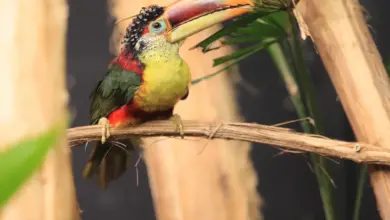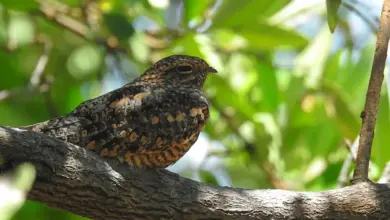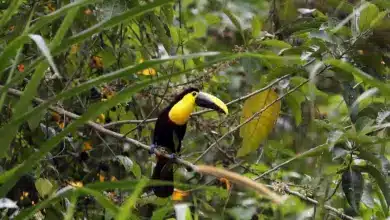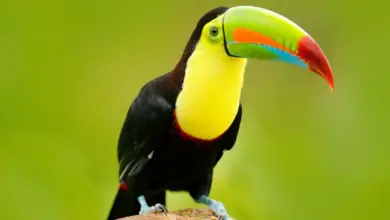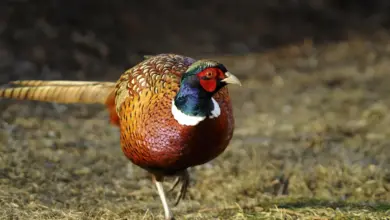The African Grey Hornbills (Tockus nasutus) occur naturally in the Old World. These hornbills are common and widespread in n much of sub-Saharan Africa and western parts of Arabia, where they inhabit open woodland and savannah.
The African Grey Hornbill (Tockus nasutus) occur naturally in the Old World.
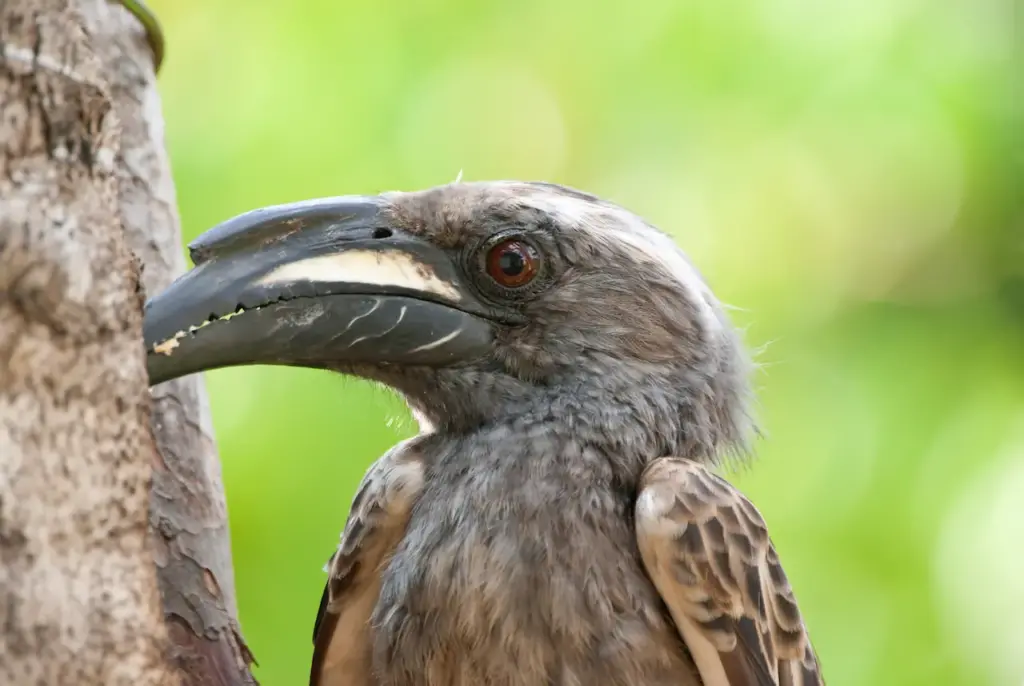
Distribution / Range
These hornbill are common and widespread in n much of sub-Saharan Africa and western parts of Arabia, where they inhabit open woodland and savannah.
They are resident (non-migratory) within their natural range.
African Grey Hornbills Description
African Grey Hornbills measure about 45 cm in length, including the long tail. They are large birds, but amongst the smaller hornbill species. Their flight is described as a smooth wavelike motion .
The bill is long and curved, with a small casque (a display growth on the upper mandible of the bill) and a creamy horizontal stripe.
Males and females look similar. Although the male can be distinguished by his black bill, whereas the female has red on the mandibles (upper bill).
Immature birds are more uniformly grey.
Similar Species:
The Red-billed Hornbill has uniformly grey plumage.
Breeding
African Grey Hornbills nest in tree cavities, the entrance of which they mostly close off with a cement made of mud, droppings and fruit pulp, while they are incubating the eggs inside. The purpose of this is to keep potential predators out of the nest.
The average clutch consists of two to four white eggs. The male feeds the female and young by transferring food through a narrow opening.
When the chicks and the female are too big to fit in the nest, the female will break out and rebuilds the wall, again only leaving a small opening. Both parents will feed the nestlings until they are independent.
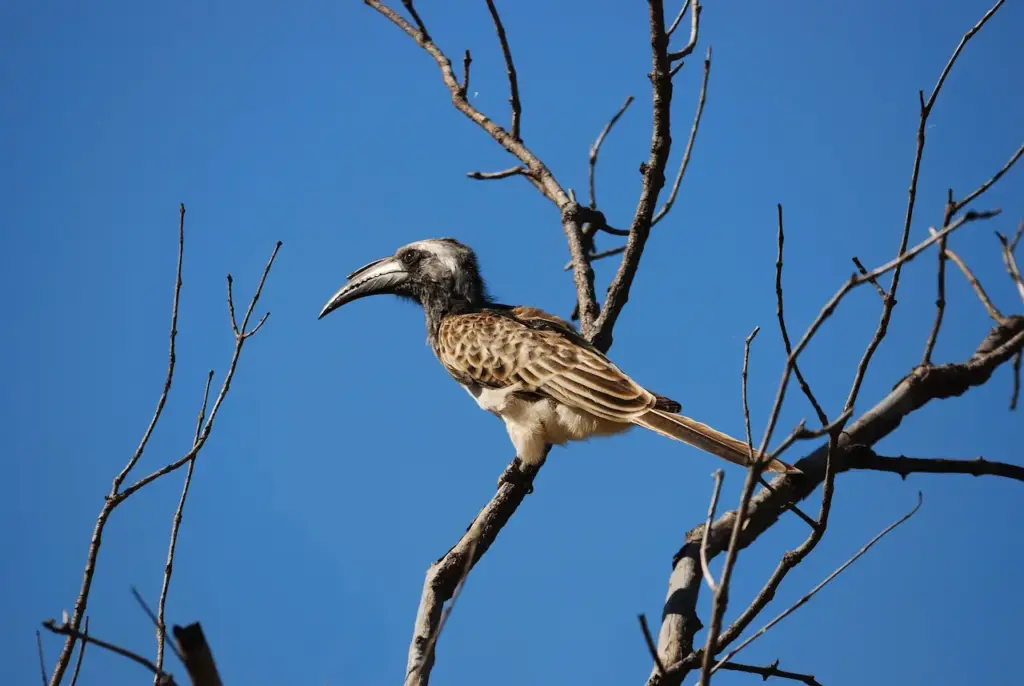
Diet / Feeding
These hornbills mostly feed on insects, fruit and reptiles. They typically forage in trees.
Calls / Vocalizations
Their vocalizations are described as piping pee-o pee-o pee-o calls.
Species Research by Sibylle Johnson
Please Note: The articles or images on this page are the sole property of the authors or photographers. Please contact them directly with respect to any copyright or licensing questions. Thank you.
